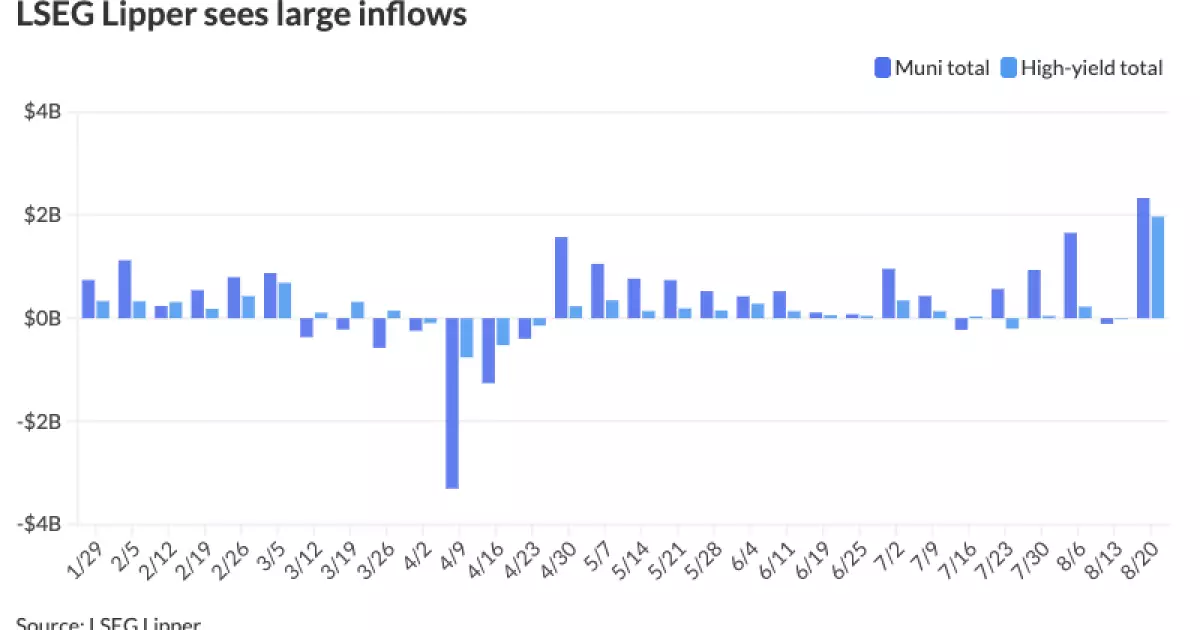The recent surge in municipal bond investments might suggest a thriving and resilient market, but beneath this optimistic veneer lies a precarious landscape that demands closer scrutiny. Despite over $2 billion pouring into municipal bond mutual funds—the highest in more than two years—a critical examination reveals that these inflows could be more about tactical repositioning than genuine confidence. Large-scale movements, especially into high-yield ETFs and specific strategies like the Capital Group Municipal High-Income ETF, often mask underlying vulnerabilities. Such inflows might reflect a search for yield amid a cautious economic backdrop rather than robust economic fundamentals. Investors should be wary of conflating volume with stability, for Monetarily, the landscape is ripe with challenges that could undermine the perceived strength of municipal debt in the near future.
Market Dynamics: More Than Meets the Eye
While primary market activities, such as bond issuances from Montana and Louisville, suggest ongoing liquidity, secondary market conditions tell a different story. The municipal market’s posturing—characterized by relatively steady yields and a subdued rate environment—belies underlying tensions. Yields on two-year and five-year munis hover around historical lows, yet the broader interest rate environment signals increasing volatility looming on the horizon. As some data indicate, the municipal market’s technicals are flashing caution: declining money market balances to the lowest since mid-April, coupled with elevated principal redemptions in September, point toward a fragile liquidity situation. The risk here is that investors may overestimate the market’s resilience, ignoring the subtle signs of overstretched valuations and a looming rate adjustment by the Federal Reserve.
The Fed’s Influence and the Illusion of Certainty
At the heart of the municipal bond uncertainty is the Federal Reserve, whose upcoming rate decisions could induce swift and unpredictable volatility. The market’s current calm is largely a product of speculation, with many investors focusing on the possibility of a rate cut—either 25 or 50 basis points—triggered by slowing inflation and a softening consumer price index. Yet, history suggests that September has been a battleground month for the Fed, often marked by regretful market losses averaging 1.3% since 2020. This pattern underscores the danger of overreacting to Fed signals, which are inherently unpredictable. For investors in municipals—who are already wary of stretched valuations—the risk of a sudden policy pivot could drastically alter yield spreads, liquidity, and the very foundation of their positions.
Much Ado About Something: The Hidden Volatility
Despite apparent calm, the muni bond market harbors silent undercurrents that could trigger chaos. The decline in CUSIP requests and trading volumes, while superficially reassuring, could be precursors to a liquidity crunch should recent inflows reverse swiftly. The divergence between yield curves—from ICE’s slight upticks to steadfast AAA scales—adds layers of complexity. Moreover, the broader context of rising Treasury yields exposes municipals to increased competition, which could lead to widening spread spreads and valuation corrections. Investors often ignore these technical signals at their peril, overly reliant on recent inflows that may fade as market conditions shift.
The Illusion of Stability and the Evolving Risk Landscape
The persistent narrative of the municipal market’s robustness is increasingly serving as a mirage—a carefully crafted illusion stemming from inflows and stable yield curves. Yet, beneath that lies a fragile ecosystem susceptible to external shocks. Rate hikes, geopolitical uncertainties, and dovish or hawkish signals from the Fed could swiftly turn sentiment sour. The current low-yield environment paradoxically leaves munis vulnerable; once rates rise, the prices of existing bonds will decline, disproportionately impacting long-term holdings that now seem immune. The real danger is not in what the market is signaling today but in the unpreparedness for abrupt changes that could unravel the recent veneer of stability.
Reevaluating the Investment Thesis for Municipals
In a liberal-Center right political framework that values fiscal responsibility but also recognizes the importance of robust infrastructure funding, municipal bonds are often viewed as a safe haven—yet, this perception must be challenged. The recent inflows, driven partly by ETF reallocations, do not necessarily reflect genuine confidence in municipal issuers’ fiscal health. Governments and agencies face mounting pressures—both local and federal—to sustain operations amid uncertain economic prospects. For the prudent investor, this calls for a reassessment: municipal bonds are not immune to systemic shocks and should be approached with caution, emphasizing diversification and a keen awareness of macroeconomic signals. The allure of tax advantages and seemingly stable yields must not overshadow the broader risks that threaten to undermine the longevity and safety of municipal debt portfolios.
In an environment increasingly characterized by technical noise and geopolitical ambiguity, investors should remember that true safety comes not from recent inflows or yield spreads but from a sober understanding of underlying vulnerabilities. Municipal bonds, once considered rock-solid, are now more akin to a house built on shifting sands—only visible to those willing to look beyond the surface.


Leave a Reply